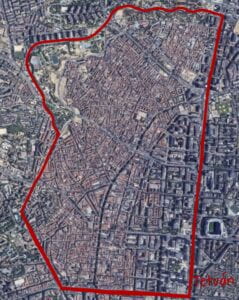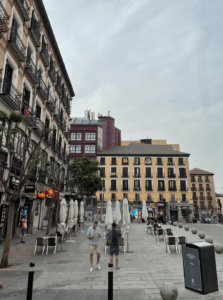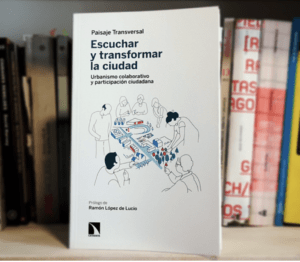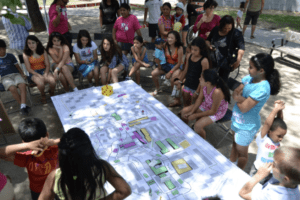As I discussed in my last blog, the Lavapiés and Tetuán neighborhoods are regarded to be among Madrid’s most susceptible areas. This week, I’ll discuss the history of both Lavapiés and Tetuán and why the neighborhoods have been labeled as “vulnerable” over the years. I’ll discuss how they coped with the pandemic and how they are currently doing.
Lavapiés
History:
The Lavapiés neighborhood, which simply translates to “wash your feet,” was founded in 1658, half a century after Madrid became Spain’s capital. The street layout has remained unchanged over time, and a vast area of farmland still marks the original border. The low rents attracted a large number of people to the region in the 1970s, leading it to become more populated. In the 1980s and 1990s, it was a hub for squatters and drug dealers. In the 2000s, it became a popular destination for immigrants, including Indians, Chinese, Senegalese, and Middle Easterners, lured by the low rent. With it came an influx of ethnic businesses, bringing a wave of hipsters and young people eager to try new dishes despite the neighborhood’s lack of diversity and neglect. The region currently has a new polyglot environment as a result of recent inflows of immigrants from North Africa and the Middle East.
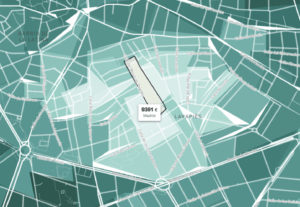
Median household Income in Lavapiés
Lavapiés’ average family income is currently at €11,000 per year. They have some of the fastest-growing property values in the country, aggravating the city’s disparity. The graphic above also shows that after you cross the motorway, your average annual income skyrockets. South of the motorway, typical earnings rise to around €23,000 per year. Along this section of road, the architecture changes as well: the road becomes wider and more gridded, while the buildings get newer (about a century younger) and include basement parking and swimming pools.
COVID-19:
Airbnbs, evictions, food banks, and riots have all become routine in Lavapiés. Protests were a common occurrence in Lavapiés before to the COVID 19 pandemic. The COVID-19 epidemic has now worsened all of the inhabitants’ previous difficulties. Neighbors organized a Lavapiés En Pie (Lavapiés Still Standing) march on June 30th, seeking immediate post-COVID-19 social measures. Fourteen organizations marched to the town hall and unrolled their homemade banners, each with different demands, such as an end to gentrification, evictions, homelessness, poverty, institutional racism, police abuse, and more. Chants and vuvuzelas (traditional African horns) were joined by ladies battling domestic violence who banged paella pan lids together like cymbals.
The COVID-19 pandemic has emerged as an important issue than ever before: to improve social policy. The lockdown has had a significant impact on the neighborhood. Lavapiés is a neighborhood with strong communal ties, which were highlighted even more during the city’s lockdown. Balcony bingo became an evening habit immediately before the nightly ovation for healthcare workers. Residents’ relationships appear to have simply strengthened as a result of their increased enthusiasm for protest.
Tetuán
History:
Tetuán is a town in Spain where one of the wealthiest regions meets one of the poorest. Today, it shares an invisible boundary with Cuatro Torres, Madrid’s financial area. The Tetuán neighborhood, named after the Moroccan city, is one of Madrid’s oldest neighborhoods. Even though it began in 1860 as a military camp for troops. Following the victory in the African war, the army was stationed in the region, and business began to grow around the military camp.
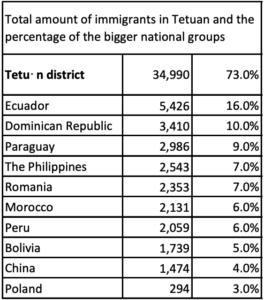
Tetuán has had a large influx of immigrants from all over the world during the last century. There are clusters of restaurants from the Dominican Republic, Haiti, and other nations from all around the world. The streets are flooded with mixed residential and commercial buildings, with restaurants or bodegas on the ground level and “pisos” on the higher floors (residential apartments). The ground floor is usually occupied by family-owned enterprises, with the remainder of the building housing the family. Some immigrant families have been displaced by the addition of luxury structures to the original sites. As a result, some families have created informal housing with low rents. Some of Tetuán’s ancient urban fabrics have very little or no open public space. Since there is no place to slow down, sit down, and chat for a long, much of the interaction is merely passing by and greeting each other.
COVID-19:
According to the latest report released by the Community of Madrid, the third wave of the pandemic appears to have hit the neighborhood of Tetuán, were registered cases are beginning to grow. The residents of Tetuán rely exclusively on their family’s business. When there was a lockdown, these businesses suffered, forcing the family to seek alternative sources of income. Many of them took to the streets in search of other means of supporting their families and bringing food to the table. Many families were infected with COVID-19 as a result of their hunt for financial resources. Due to the informal housing situation that some residents are faced with, many families got infected by COVID-19 causing the number of COVID-19 cases to skyrocket.
- https://www.eldiario.es/madrid/somos/tetuan/noticias/contagios-covid-19-suben-tres-zonas-salud-tetuan_1_7296487.html
- https://www.expatmadrid.com/2018/05/30/gentrification-tetuan/
- https://english.elpais.com/elpais/2016/08/15/inenglish/1471270218_675582.html
- https://books.google.com/books?id=B_VADwAAQBAJ&pg=PA274&lpg=PA274&dq=tetuan+madrid+gentrification&source=bl&ots=qgrIHN7HHR&sig=ACfU3U3CCA4qAcvU91EaULPXe10cs8C1kQ&hl=en&sa=X&ved=2ahUKEwj5v9vpkbfyAhULWs0KHTI0A7AQ6AF6BAgOEAM#v=onepage&q=tetuan%20madrid%20gentrification&f=false
- https://theculturetrip.com/europe/spain/articles/welcome-to-lavapies-madrids-cool-anti-glamour-neighborhood/
- https://madridnofrills.com/ancient-invisible-borders/
- https://theculturetrip.com/europe/spain/articles/welcome-to-lavapies-madrids-cool-anti-glamour-neighborhood/
